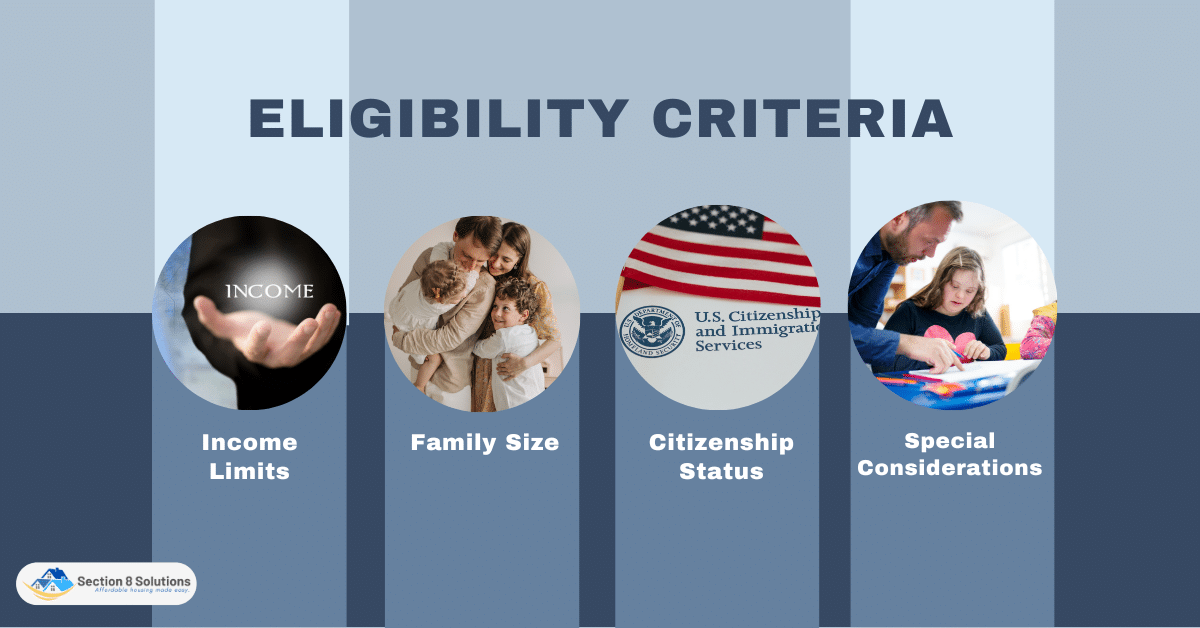To apply for Section 8 in Connecticut, follow these steps: 1. Contact the Connecticut Housing Authority to confirm eligibility and obtain an application form. 2. Complete the form accurately, providing all necessary documentation. 3. Submit the application within the specified timeframe and await a response regarding your Section 8 housing voucher eligibility.
In this informative guide, we will walk you through the step-by-step process of applying for Section 8 housing assistance in Connecticut.

Understanding Section 8 Housing Assistance
The Section 8 program, commonly known as the Housing Choice Voucher Program, serves as a crucial pillar of support for individuals and families in search of affordable housing solutions. Its core objective is to bridge the financial gap between housing costs and the limited resources of low-income households. By extending financial aid, the program empowers eligible participants to secure safe and hygienic housing that would otherwise be financially out of reach.
One of the primary advantages of the Section 8 program is its capacity to render housing costs manageable for those with limited financial means. Participants are obligated to contribute only a fraction of their income towards rent, ensuring that housing expenses do not become an insurmountable burden.

Eligibility Criteria
Navigating the eligibility criteria for Section 8 housing assistance in Connecticut is crucial for those seeking affordable housing solutions. This section delves into the intricate details of the requirements that must be met in order to qualify for this vital program.

1. Income Limits
In Connecticut, meeting specified income limits is a key determinant for Section 8 eligibility. These limits vary based on both your family’s size and your geographical region. Priority is often given to households with lower incomes, aligning with the program’s mission to aid those facing financial constraints.
2. Family Size Considerations
The size of your household plays a crucial role in the eligibility assessment. Larger families may have higher income thresholds to meet while still qualifying for Section 8 assistance. Conversely, smaller households may have lower income limits. This nuanced approach ensures that varying family sizes are equitably considered.

3. Citizenship Status
Generally, Section 8 eligibility is extended to U.S. citizens or eligible non-citizens. Providing documentation that verifies your legal residency status is typically a requirement. This prerequisite underscores the program’s adherence to legal and regulatory standards.
4. Special Considerations
The Section 8 program accounts for the unique circumstances of elderly and disabled applicants. Elderly individuals, typically aged 62 or older, often have specialized criteria that recognize their distinct needs. Similarly, disabled applicants may need to provide appropriate medical documentation, ensuring that their specific requirements are acknowledged and accommodated within the program’s framework.
Understanding the eligibility criteria for Section 8 housing assistance in Connecticut is the first step toward securing much-needed affordable housing. Carefully evaluating your income, family size, and citizenship status will help determine your qualification.

Gathering Required Documentation
When applying for Section 8 housing assistance in Connecticut, assembling the necessary documentation is a crucial step that can significantly impact the efficiency of your application process. This section outlines the essential documents you’ll need to provide and underscores the importance of accuracy and currency.
- Proof of Income: Prepare recent pay stubs, income tax returns, and any other documentation that verifies your household’s earnings. This information helps assess your eligibility based on income limits.
- Identification: A valid form of identification for all household members, such as driver’s licenses, social security cards, or birth certificates.
- Rental History: Information about your rental history, including previous addresses and contact details for landlords. This assists in evaluating your rental background and suitability for the program.
- Asset Information: Declare any assets you possess, such as bank statements, stocks, or real estate holdings. While assets themselves might not disqualify you, they contribute to the overall assessment of your financial situation.
- Citizenship or Immigration Status: If applicable, provide documentation proving your citizenship or eligible non-citizen status, as required by program regulations.
- Family Composition: A list of all individuals living in your household, along with their birthdates and relationships. This helps determine the appropriate household size for income calculations.
Accurate and up-to-date documentation is essential for expediting the application process. Inaccurate or incomplete information can lead to delays or even rejection of your application. Verification of income, for instance, ensures that you’re fairly assessed according to the program’s income limits.

Contacting the Connecticut Housing Authority
Getting in touch with the Connecticut Housing Authority is the pivotal starting point in your pursuit of Section 8 housing assistance. Begin by identifying the housing authority that covers your area and gather their contact information. Whether through a phone call, an in-person visit, or an email, establish direct communication with the housing authority to glean vital insights into the application process, required documents, and any region-specific guidelines. Remember to request application forms, note down key details, and prepare your questions to make the most of this initial interaction. This proactive approach will ensure that you’re well-informed and ready to navigate the road ahead toward securing the housing support you need.

Completing the Application
The completion of the Section 8 housing application marks a crucial step towards accessing the support you need. This section outlines the key aspects involved in filling out the application form.
1. Obtain the Application Form: Begin by obtaining the official Section 8 housing application form from the Connecticut Housing Authority. You can often find this form on their website or request a physical copy from their office.
2. Read Instructions Thoroughly: Before you start filling out the form, carefully read through the instructions provided. This will ensure that you understand the requirements and can provide accurate information.
3. Provide Accurate Information: The application form will require personal details, income information, family composition, and more. Ensure that all the information you provide is accurate and up-to-date.
4. Gather Supporting Documentation: Alongside the application form, you’ll need to submit various supporting documents. This might include proof of income, identification, rental history, and any other relevant documentation. Make sure you have all these documents ready before you begin.
5. Complete All Sections: Fill out all sections of the application form, even if a particular section doesn’t seem directly applicable to you. If a section doesn’t apply, you can often indicate that by marking it as N/A (not applicable).
6. Double-Check for Accuracy: Once you’ve completed the form, review it meticulously. Check for any errors, typos, or missing information. Accuracy is vital to ensure that your application is processed smoothly.
7. Follow Submission Instructions: Submit your completed application form and accompanying documents as per the instructions provided by the housing authority. This might involve mailing them, submitting them in person, or using an online application portal if available.
8. Keep Copies: Before you submit the application, make copies of the completed form and all supporting documents for your records. This can be helpful for your own reference and in case any issues arise.
Completing the Section 8 housing application requires attention to detail and accurate information. By adhering to the instructions, providing necessary documentation, and ensuring the form is filled out accurately, you’re setting yourself up for a smooth application process.

Submission and Waiting Period
Once your application is submitted to the Connecticut Housing Authority, you enter a period of anticipation as your application undergoes review. This process involves verifying the information provided, assessing eligibility, and ensuring that all required documentation is in order. Given the demand for housing assistance, waiting lists are common, and the duration can vary. While the waiting period can be challenging, it’s essential to remain patient and keep your contact information up to date. This ensures that you can be reached promptly once your application progresses and housing assistance becomes available.

Conclusion
Applying for Section 8 housing assistance in Connecticut is a vital step towards securing affordable housing for those in need. By following this comprehensive guide, you’ll be well-equipped to navigate the application process with confidence. Remember, accurate documentation and attention to detail are key to expediting your application’s review. Stay informed, be patient, and soon you could be on your way to accessing the benefits of the Section 8 program.










